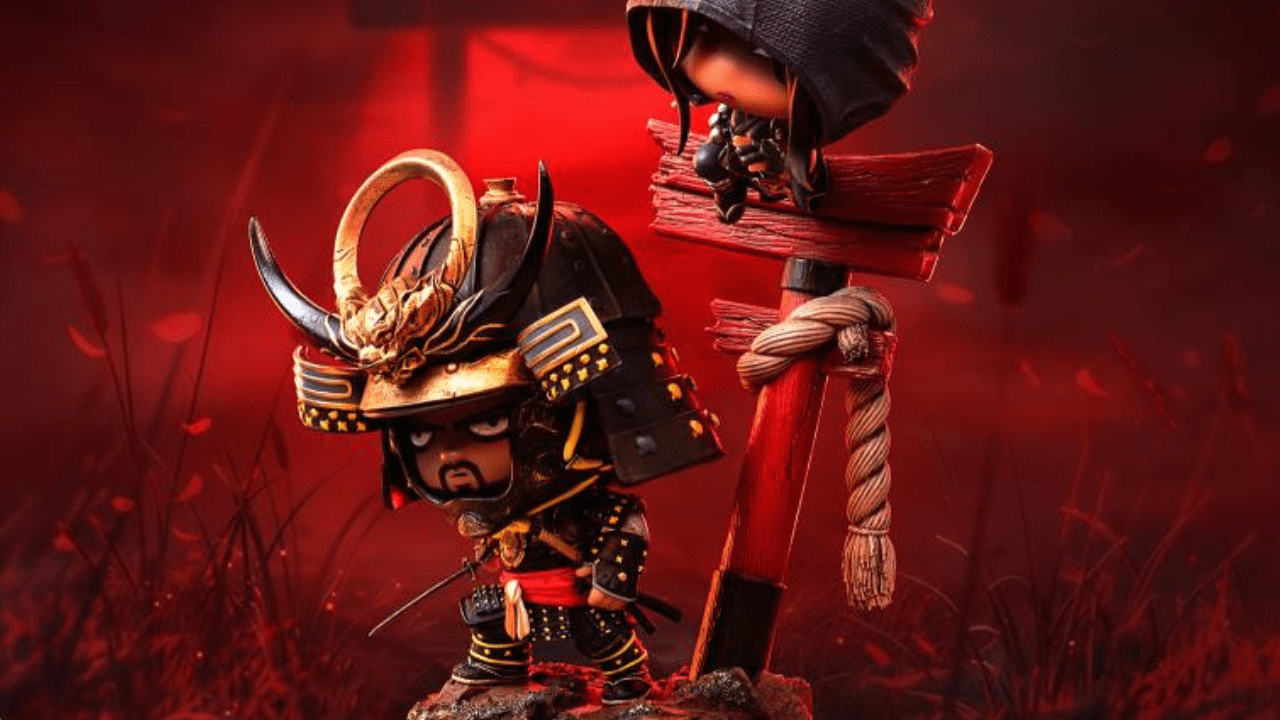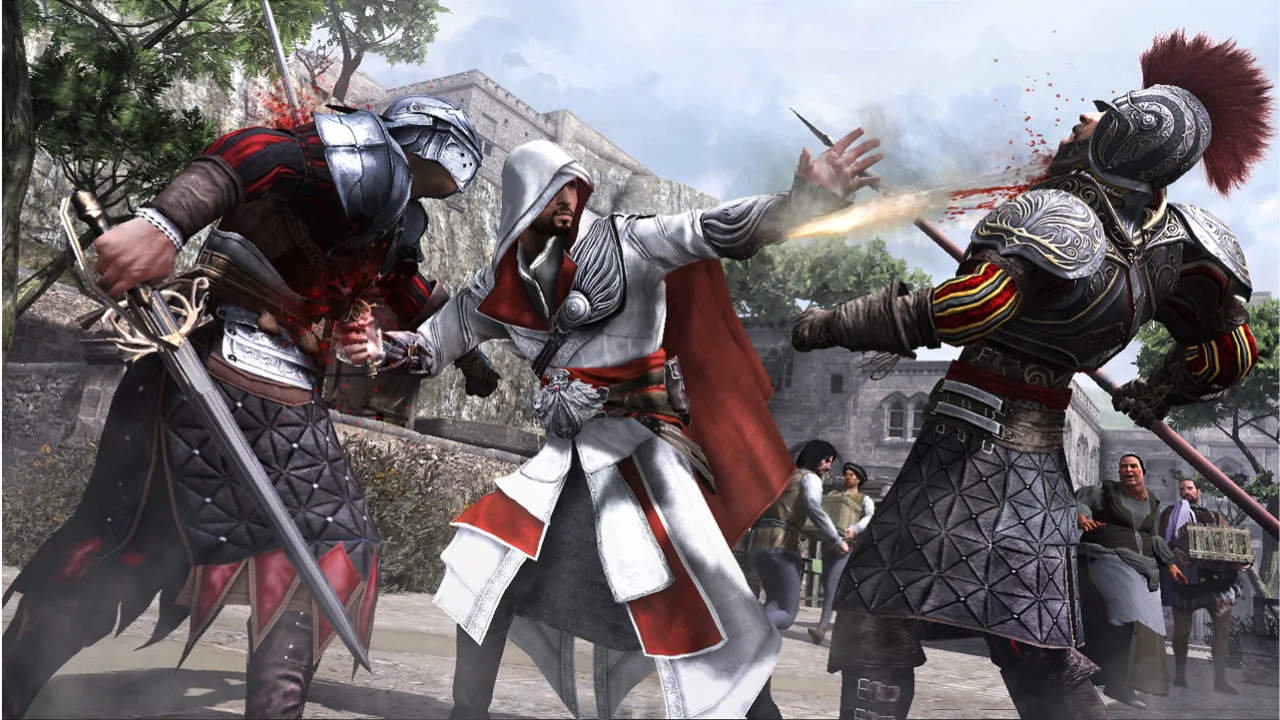
Ubisoft has landed in yet another controversy as the Itate Hyozu Jinja shrine in Japan has formally requested the removal of its sacred site from Assassin’s Creed Shadows. The demand comes after recently released gameplay footage revealed that the game allows players to enter the shrine—an active place of worship—and destroy its interior, including smashing items and even demolishing the temple’s altar.
NPC gets shot in the head by Yasuke’s arrow, yet is fine and just runs away… Assassin’s Creed Shadows.
Yasuke then goes on to destroy a sacred Japanese shrine.
Tks to @GregBruniGB for pointing it out.pic.twitter.com/KjnXXZpBcR
— Grummz (@Grummz) January 31, 2025
READ: Sweet Baby Inc. Allegedly Linked to Secret Indie Game Funding Network, Report Alleges Hidden Ties Between Landfall Games, Wings Interactive, and SBI
Mark Kern, AKA Grummz, former World of Warcraft lead and gaming industry veteran, relayed the reaction of those connected to the shrine.
“My local source confirms: The Itate Hyozu Jinja shrine in Japan has filed a formal request to Ubisoft, asking them to remove the entire religious site from Assassin’s Creed Shadows. My source tells me the temple leaders are very upset at the use of their shrine and the ability to destroy the interior.”
My local source confirms:
The Itate Hyozu Jinja shrine in Japan has filed a formal request to Ubisoft, asking them to remove the entire religious site from Assassin’s Creed Shadows.
My source tells me the temple leaders are very upset at the use of their shrine and the ability…
— Grummz (@Grummz) February 12, 2025
This latest blunder adds to the growing list of cultural missteps that have plagued Shadows since its announcement. Ubisoft has repeatedly claimed to have conducted extensive research on Japanese history and culture, hiring so-called “experts” to ensure authenticity. Yet, the company has demonstrated a pattern of tone-deaf decisions that have infuriated both Japanese audiences and long-time fans of the Assassin’s Creed franchise.
A Long Pattern of Cultural Insensitivity
The Itate Hyozu Jinja controversy isn’t an isolated incident. Ubisoft has faced widespread backlash for numerous inaccuracies and disrespectful depictions of Japanese culture in Shadows.
One major issue stemmed from a collector’s statue included in the game’s special edition, which featured a destroyed torii gate. Fans quickly pointed out that the broken gate bore an unsettling resemblance to the famous photograph of the torii gate left standing in Hiroshima after the atomic bombing in 1945. The resemblance was so striking that many accused Ubisoft of either intentionally referencing the devastation of Hiroshima or, at the very least, being grossly negligent in their design choices.

Assassin’s Creed Shadows Qlectors Yasuke & Naoe (2024), Pure Arts
The backlash was immediate, with many calling the design deeply inappropriate and offensive, especially given Japan’s sensitivity to its wartime history. Faced with mounting criticism, Ubisoft quietly removed the statue from its promotional materials and ultimately decided to scrap it entirely from the collector’s edition. However, the damage had already been done, further reinforcing the perception that Ubisoft lacked the cultural awareness necessary to handle a game set in Japan.
Another recent scandal involved the unauthorized use of the Sekigahara Teppo Corps’ banner in official Assassin’s Creed Shadows art. The symbol, belonging to a real and still-active historical organization, was used without permission. This led to demands for Ubisoft to remove it from promotional materials. The company was forced to apologize and remove the banner from promotional materials. However, it’s still featured in the game’s official art book.
This is the banner Ubisoft used without permission.
Video is here: https://t.co/7x3GSi63gn pic.twitter.com/S1V0DRct3h
— Grummz (@Grummz) June 18, 2024
Additionally, Ubisoft’s choice to center the game around Yasuke has been a source of ongoing controversy. While Yasuke was a historical figure, his actual role in Japanese history remains unclear. Unlike previous Assassin’s Creed games, where historical figures were NPCs providing context and missions, Shadows makes Yasuke the primary playable protagonist, sidelining traditional Japanese male figures in favor of a narrative that many feel is manufactured to fit modern ideological trends rather than historical reality.
Ubisoft’s Troubled History with Sacred Religious Sites
This isn’t the first time Ubisoft has shown disregard for religious landmarks. One of the most infamous examples comes from Assassin’s Creed II, where the final mission involves breaking into the Vatican and physically assaulting the Pope. While this was played off as part of the franchise’s historical fiction, it set a precedent for Ubisoft’s willingness to depict real-world religious sites in a way that many would find offensive.

A screenshot from Assassin’s Creed Brotherhood (2011), Ubisoft Montreal
Now, with Shadows, Ubisoft is facing similar backlash from Japan, a country that takes its cultural heritage seriously. The destruction of a real, still-functioning Shinto shrine crosses a line that many believe should never have been approached in the first place.
Will Ubisoft Comply?
With the Itate Hyozu Jinja shrine formally requesting its removal from Assassin’s Creed Shadows, the question remains: will Ubisoft comply, or will it ignore yet another legitimate grievance from the very culture it claims to respect? Given the company’s track record and the game’s rapidly approaching release date, skepticism is warranted.

A screenshot from Assassin’s Creed Shadows (2024), Ubisoft
This latest controversy only deepens the ongoing backlash against Assassin’s Creed Shadows. Between repeated delays, historical inaccuracies, a release date coinciding with the anniversary of a horrific domestic attack, and now the depiction of real-life religious vandalism, Ubisoft is rapidly alienating both fans and the people of Japan. If the company truly wants to prove it respects the culture it’s attempting to depict, removing the shrine should be the bare minimum step it takes.
Do you think Ubisoft will remove this shrine from Assassin’s Creed Shadows? Sound off in the comments and let us know!





